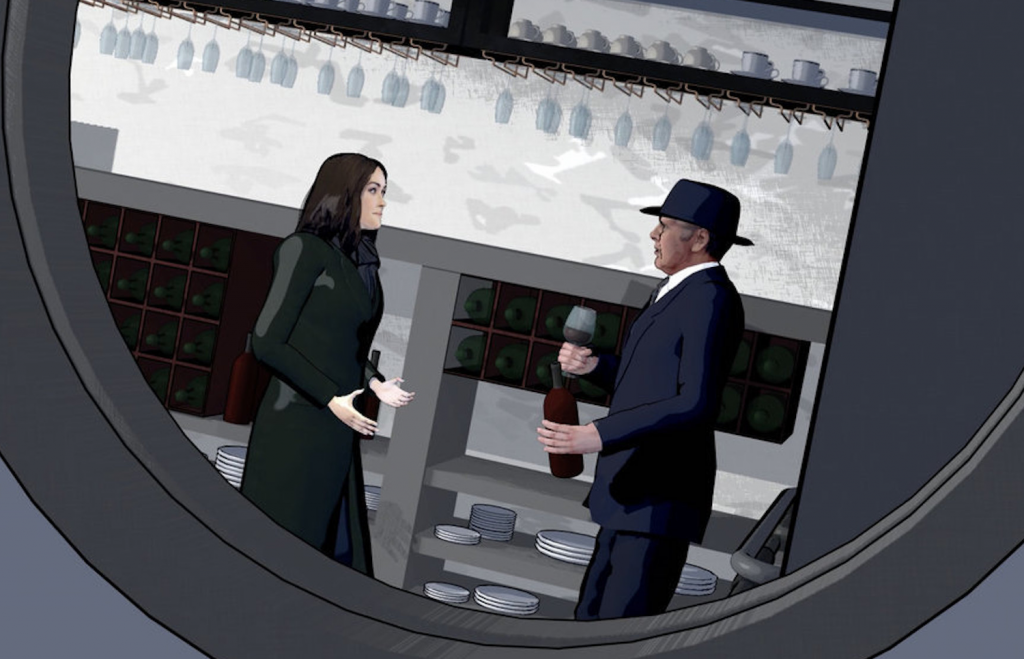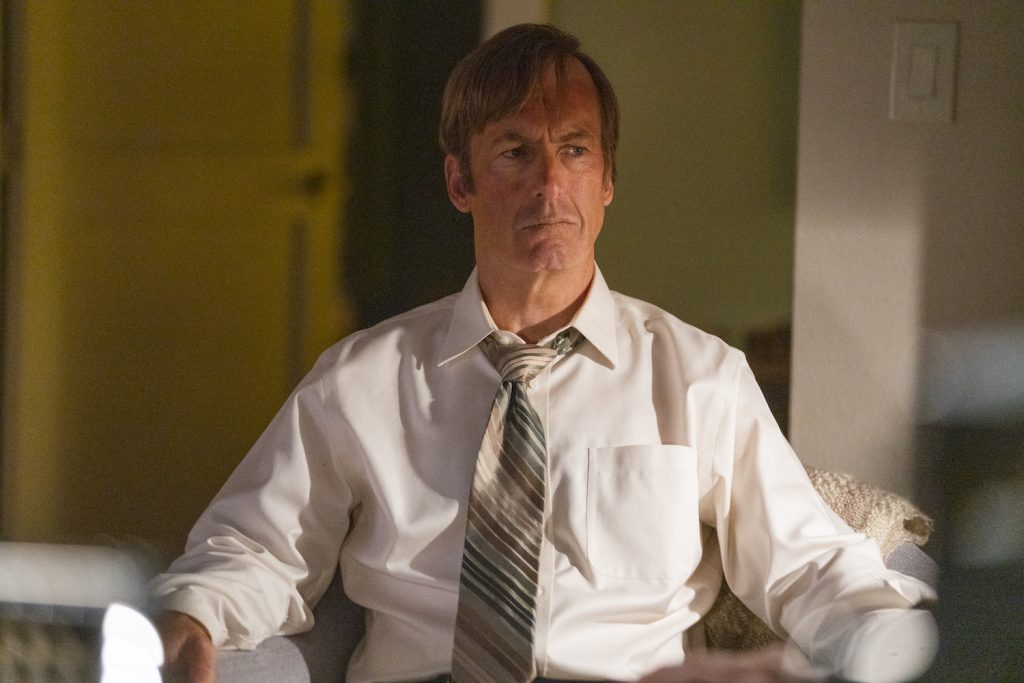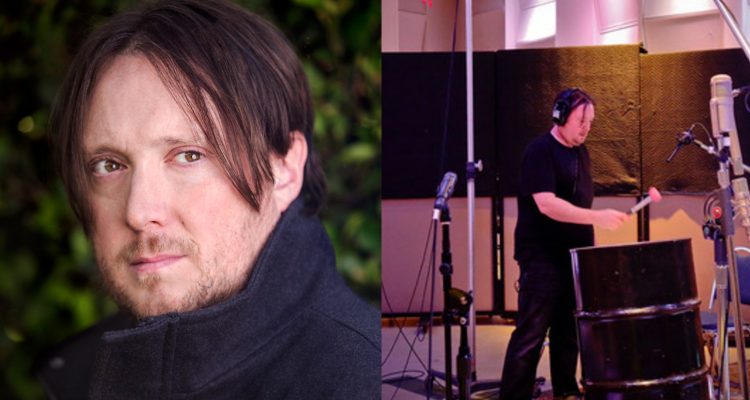Emmy winner Vince Gilligan is a man with great instincts when it comes to writing, directing, and casting. His ability to hire the right person for the right job has never been more evident than when he chose composer Dave Porter to score Breaking Bad.
Porter met with Gilligan nearly thirteen years ago for the under-the-radar series launching on AMC. That meeting marked the beginning of a collaborative partnership that has continued through five seasons of Better Call Saul and now Netflix’s El Camino: A Breaking Bad Movie.
Porter spoke to Awards Focus about humble beginnings of the Albuquerque set franchise, being thrown an animation curveball during the pandemic, and how he masterfully score the Kim/Jimmy/Lalo face-off in the penultimate episode of season five.
Awards Focus: The Blacklist capped off its seventh season by animating scenes that couldn’t be shot because of the pandemic. Can you share some insight into how you merged the two mediums sonically? How did that development chance your process?
Dave Porter: Oftentimes, the music for big animated features is written beforehand, and then the movie is animated in sync with the music. I didn’t have that luxury here, so I had to really be cognizant of what was happening on the screen, maybe more than ever. I wanted to make sure to highlight certain moments while staying in the overall rhythm of the piece.

AF: The sound design and ambience of filming live actors on location is a big part of a series like The Blacklist, and how you balance those elements with the score. With animation, you’ve got the actors’ voices and a lot of space to fill with the music. How did you adjust to that?
Porter: It was clear that animated sequences needed a little more music, because I’m not fighting with the distinct visuals of the live actors and their nuances or the natural sounds that would have been present when shooting on film. It’s tough because we were bouncing back and forth between animation and live action in the episode, which can certainly be jarring. During the animated scenes, the main goal was to make the scenes feel whole.
AF: Before we get into Better Call Saul, let’s take it back to Breaking Bad. How has your relationship with Vince Gilligan evolved over the years?
Porter: The first time I met Vince was the interview for the Breaking Bad job, which is going on thirteen years now. I was fortunate to catch him at a time just before he did something amazing, and ever since then he’s worked with me, he’s trusted me, and he’s helped me grow as a composer. The whole creative team has, frankly, not because there’s any kind of pressure, but because we all push each other.
AF: Breaking Bad became such a cultural phenomenon. At what point did you realize the gravity of the show?
Porter: I didn’t know what it was going to become. After season one, our focus was on whether we’d get another season. But Bryan (Cranston) winning the Emmy put us on the map as far as critics go, and by the time those later seasons rolled around, people were talking about it in my daily life. I’d go to a coffee shop and hear people discussing it. Sometimes people asked me if I’d seen it! (laughs)
AF: Breaking Bad has such an iconic, concise title sequence. What was your creative process in making that?
Porter: Vince and his team already had a rough version of the title animation, and it was relatively short. I just tried to match that length and write something that would really fit the sequence. And I think it’s aged well in the streaming era, because people don’t usually skip it.
AF: What is your process when it comes to handling the most tense and important moments in both Breaking Bad and Better Call Saul?

(Photo Credit: Greg Lewis/AMC/Sony Pictures Television)
Porter: When I talk to Vince or Peter about scenes like that, I come at it from a story perspective. “What’s this character thinking? What led them to this moment?” I ask those kinds of questions.
The great thing about those scenes is that the acting holds up amazingly well without music. I’m not carrying the scene, just accentuating it when the situation calls for it. A lot of times, a scene will need silence.
I’m proud of some of the great musical moments in Breaking Bad and Better Call Saul, but I’m equally proud of the moments where we used silence effectively.
AF: In episode nine of this past season, there’s that terrifying scene where Lalo demands that Jimmy recount his story over and over again. The score from that scene kicks in the first time Lalo says “Tell me again.” What was your thought process behind that moment?
Dave Porter: You could certainly score the whole scene from the moment Lalo arrives at the apartment. That was on the table at first, making the threat of Lalo very clear and real was vital. But he’s so good and so disarming, that the more that I worked with it the more I found the beauty in leaving the scene ambiguous.
Obviously, it’s not great news that Lalo’s there in their home, but just how bad is it? As the scene unravels, so does Jimmy, who is depleted from his traumatic desert experience… both physically and mentally. The audience quickly realizes that he’s not able to talk himself out of this, Lalo is too good.
When Jimmy starts repeating it, again and again, it just felt so dreadful. That, to me, was the moment to start. And the music continues, it waxes and wanes for quite a while in that scene. I think it goes for six minutes, which for a Breaking Bad or Better Call Saul theme, is quite long.
AF: I want to touch on El Camino: A Breaking Bad Movie. What was your process for making the score so tense and memorable?

EL CAMINO: A BREAKING BAD MOVIE Premiere.
Dave Porter: There are two separate aspects of the score for El Camino. One aspect of the score was that it needed to be directly connected to Breaking Bad as a television show… the other aspect, which was still loosely connected to the world, was more specifically about Jesse’s story.
At the beginning of the movie, I almost wanted the score to sound like the next episode of Breaking Bad following the finale. As the movie progresses, I wanted to explore Jesse. He was obviously an important character in the series and brilliantly played by Aaron Paul, but it was really Walt’s series. So putting Jesse directly in the spotlight in this movie gave me a lot of real estate to experiment with and carve new ground. It was all about conveying his character. Jesse was, in some sense, the moral thread of Breaking Bad, and El Camino was really a homage to that.
Jacob Romines contributed to this article.


